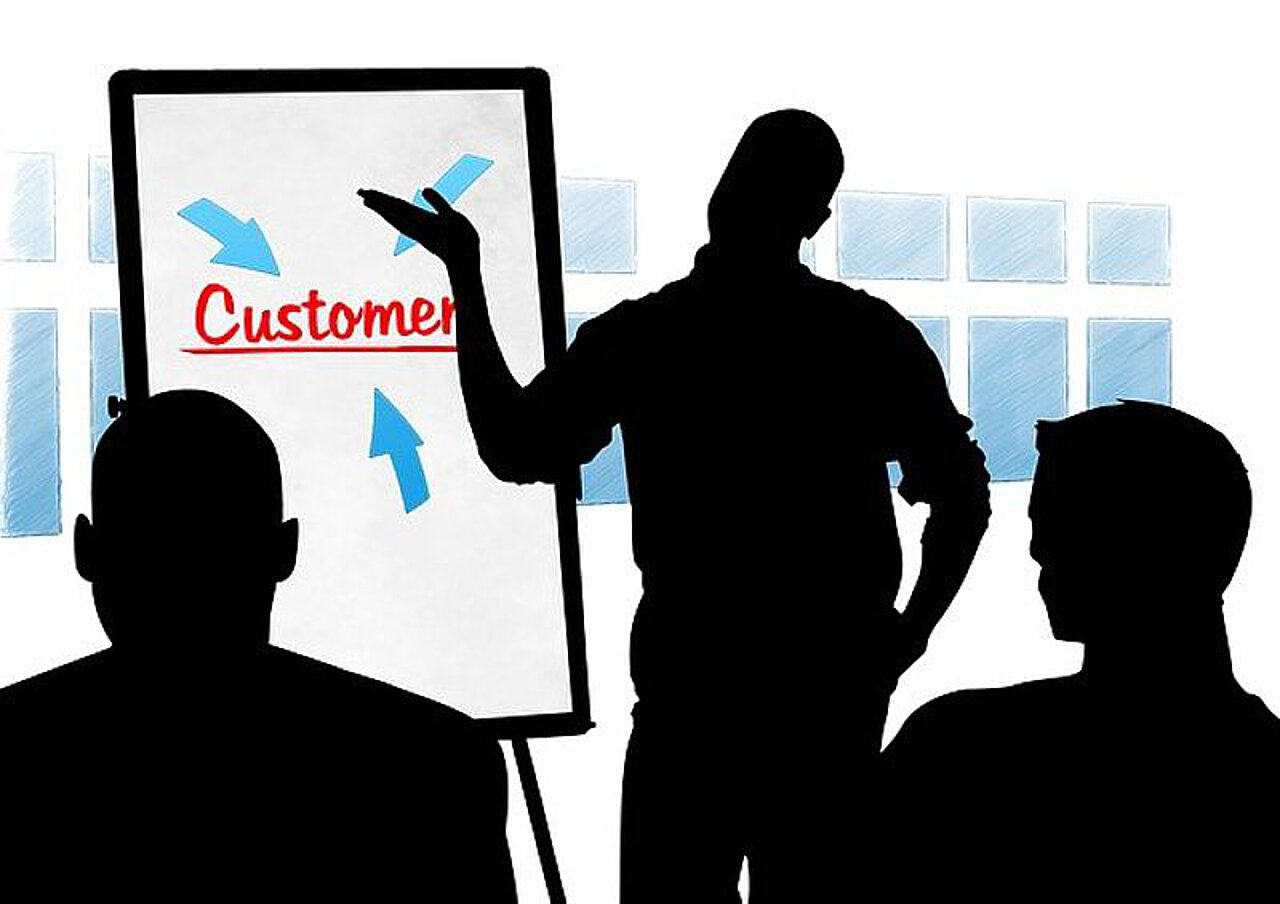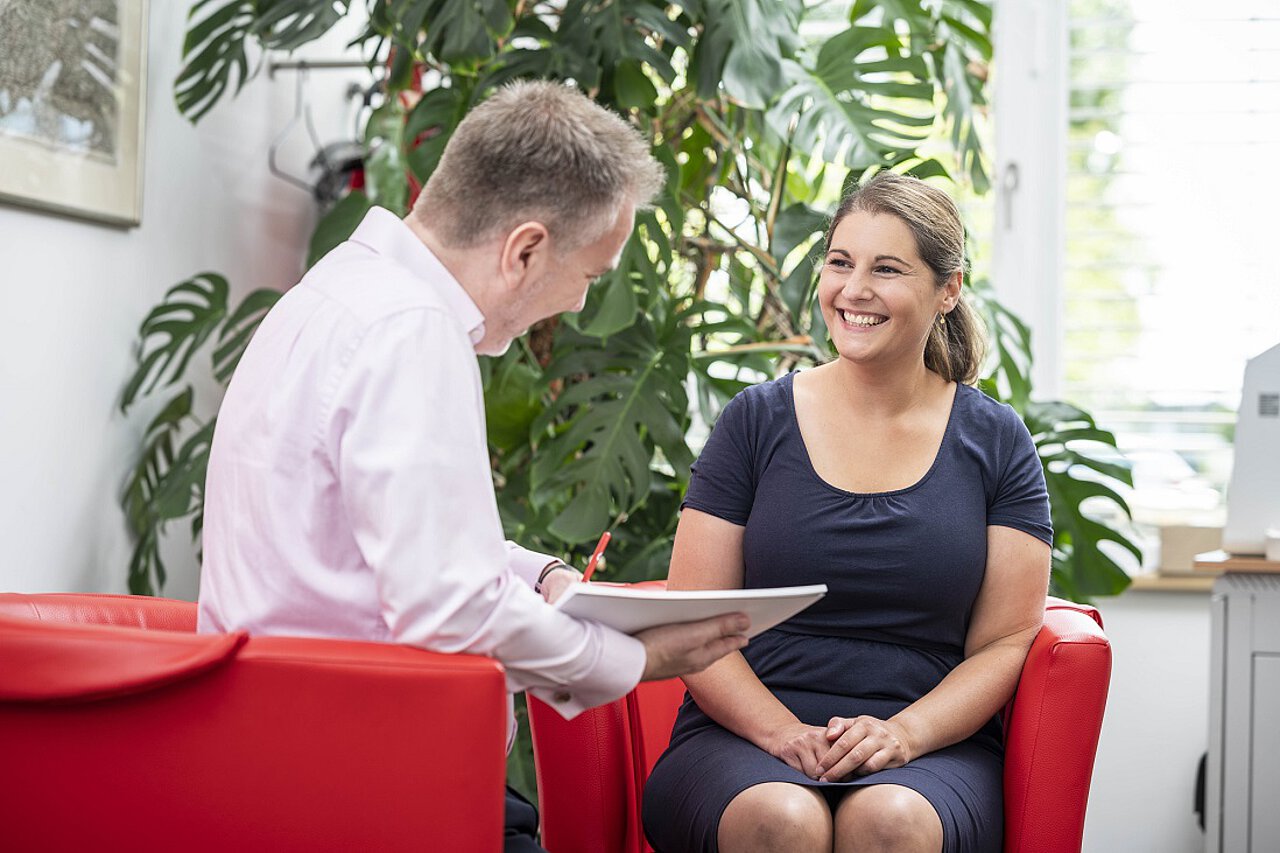From the idea to success
From the idea to the MVP (Minimum Viable Product) to success with the help of your own panel. On to profitable new services! Get a practical guide in your new seven-part series. Increase your chance of success.
Many routes lead to the goal. Some of them are riskier than necessary - taking shortcuts through dangerous terrain. Some involve detours or delays. Others end in nowhere. This path will get you there safely.

The A&O: Preparing well is half the battle

You will also benefit from the following hints and tips from your consultants
Your step 1
Planning, outlining, arranging
For which situations is the procedure suitable?
- You are dealing with new (digital) business models.
- You are planning new digital services as a classic company.
- You are expanding your portfolio with new digital services.
Your first step - planning, outlining, arranging
- Customer journey
- Personas
- USP (unique selling proposition)
- Business case
- Competitors
- Unmet needs
- Canvas
- …
If you are faced with the task of creating a new profitable service from an idea, you are bombarded with countless technical terms. This is often accompanied by a perceived, or sometimes just self-imposed, pressure to produce results very quickly.
How does the idea give rise to a concrete product, a business model?
Start with a plan. Outline your approach for yourself. List the necessary steps. In each case, consider how long it will take to achieve a first result.
Important: Create your plan as a file/document. Whether you use classic project management software, a spreadsheet programme or a mind map plays a minor role. The plan ensures that your thoughts are organised. It gives you security in the process. Your document reminds you of important steps and dependencies. You will receive an initial estimate of the results you can expect and by when.
It also makes it much easier to involve other participants in your project.
Consider at least the following activities:
- Outline basic idea
- Develop a hypothesis on benefits
- Create rough calculation
- Understand the situation of the intended target group
- Identify needs based on real people
- Derive minimum viable product
- Get feedback as you move to development
- Describe development path
- Perform free calculation
- Customise product
- Launch
Tip from your consultants:
Dedicate yourself to understanding the situation, the participants and the needs through more knowledge:
- more attention
- more time
- more details.
As a result, you derive your personas much more easily and, above all, more unerringly. Personas, this is the personalisation or description of your different customers, their needs, their situation, their status. At the moment, personas are virtually regarded as an industry standard. The same applies to the unmet needs, the market opportunity1.
Good to know:
- With eisq, experienced pilots are at your side.
- Reach your destination more safely and maximise your results.
- Feel free to use us as a clock generator or sparring partner.
Arrange a free Teams appointment.
1Note:
Many companies often define a market opportunity as a new product. They believe that the real market opportunity is to find a need that their technology or product offerings could meet. But that is a mistake! Market opportunities do not arise because a company has a certain competence or creates something. Market opportunities arise because customers have difficultydoing a job/task. These battles are the market opportunity: success comes from discovering unmet consumer needs and helping them do their jobs more easily. By creating benefits for companies.

Episode 2: Asking the right and important questions

Essential for planning: asking the right questions
Your step 2
Synchronising and developing questions
The plan is in place. Now you start to develop the new services. In doing so, you synchronise the process with questions regarding the needs of the planned target customers.
Start by describing potential users. What characteristics do they have? If you want to launch a new charging card for e-mobilists, this might mean the following for the characteristics:
- Person drives car.
- Person uses e-cars at least occasionally.
- Person has sufficient credit rating.
- In principle, the person is open to new techniques and payment methods.
Then think about where you find such people. Your first ideas quickly come to you. If applicable think of forums for e-mobility or heavily frequented charging stations.
Perform structured interviews with relevant persons. Digital, personal or telephone. Learn more about the needs and reality of your target group.
Important: Create your questionnaire. Keep the balance between the scope and the necessary parameters to make progress.
Tip from your consultants:
Use your list of questions to sharpen the following aspects, among others:
- Characteristics of persons
- Needs in the form of needs and unmet needs
- The situation in which the persons are
- (Digital) environment in which the persons are located
Everything you find out now flows directly into the development of your new digital services. You derive the personas and develop the digital customer journey. With every insight, your product matures at the same time.

Episode 3: Create a panel, look after it properly and take away important knowledge
Your step 3
Create your own panel
Panel means you have a group of people that you interview several times and with whom you discuss your progress.
At this point you should have
- your personas,
- your digital customer journey and
- the knowledge
- of where you can find this target group.
Now start to specifically invite appropriate peopleto your panel. Get the consent (opt-in) to use the contact data and answers.
Managing the panel participant data
Do you have the possibility to create an encapsulated pool in your CRM tool? Use that.
Otherwise, we recommend a pragmatic way of "abusing" a survey solution such as LimeSurvey. In it you can manage your participant data.
Manage panel participants
Provide for management of your participants from the beginning. As a rule, it suffices if you provide personal contact persons for queries as well as small 'incentives'.
Incentives need not necessarily correspond to a direct cash flow. Put yourself in the world of the people for a moment.
Find three creative solutions from the practice of eisq matching the respective project:
- Sponsorship of a user group meeting with coffee and bread rolls (software)
- Invitation of panel participants to an exclusive power plant tour (energy supplier - smart meter project)
- Provide lucky tickets (service design eCommerce)
Inform panel participants
Remember to keep your panel members regularly informed. In our experience, every three to four weeks proves to be a useful frequency.
Communicate
- what you are working on – This will also show how much you value the input of the participants.
- which surveys are currently running – very important! You thus give insight into what is happening and why perhaps a group of your panel is not currently receiving a survey.
Experimental values from your consultants:
As a rule, small panels with, for example, three or four subgroups of 40-50people each suffice to develop a new service, a new product. Conversely, a size of approximately 150 to 200 persons is sufficient to receive regularly relevant input for you and at the same time to keep your effort manageable.

Get the Minimum Viable Product right from the start and be successful with it

You will benefit from the following hints, tips and experience of your consultants
Your step 4
Develop your minimum viable product
What MVP means in this context:
- your service/digital product is in the first stage of developmenttestable by customers.
- It contains your planned essential function(s), which is/are aimed at the needs of the target group that you have previously identified - the minimum possible scope of the functions.
Three guiding principles have proven to be particularly useful in this respect, based on the experience of your consultants.
1. Guiding principle: Define and track core benefits accurately
Write down your planned core benefits as precisely as possible. Feel free to invest two additional thought loops. Once your core benefit is in place, capture it well digitally in the project folder and physically on paper.
Focus your activities on the core benefits.
What do your advisers mean by that?
In the course of project work, people like to get lost on byways and sideshows. This is a natural phenomenon. Specific case: In the course of an app development, the development team discussed the colour scheme of the planned app for longer and more intensively than its actual core function.
Of course, the colour and name play an important role in whether the app is found in the App Store later. However, for the MVP status, the significance is subordinate.
Tip: As a project manager, always recur to and focus on the core benefits.
2. Guiding principle: Maintain a balance between your own aspirations, planned target dates and the work to be done
In consulting practice, your experts observe conflicts within the project team when it comes to creating MVPs. The breaking lines in this example were particularly striking:
- the engineering team for the software product did not want to enter the market under any circumstances. People were too aware of the MVP's shortcomings. They were ashamed and felt hurt in their pride as engineers.
- Everything went much too slowly for the marketing and sales management. The person pushed for a start the day before yesterday, at the latest immediately.
- The commissioning unit 'New Services' constantly weighed up how much effort would be put into development in view of the forecast market volume. At the same time, it was known that only a working solution would gain acceptance in the market.
Tip: Maintain balance.
3. Guiding principle: Allow failure
It takes a lot of courage to break off in the context of an MVP development. Do you know how it feels for project members when, after days of euphoria, it suddenly becomes clear internally that it won't work?
Some people resign, many show disappointment, others try to carry out the projectwith pressure and a ‘now more than ever mentality’.
Tip: Include experienced project managers who are skilled at managing the team's emotions. This allows you to make mistakes and gain both strength and motivation.
Experimental values from your consultants:
As a rule, small panelswith, for example, three or four subgroups of 40-50people each suffice to develop a new service, a new product. Conversely, a size of approximately 150 to 200 persons is sufficient to receive regularly relevant input for you and at the same time to keep your effort manageable.

Presenting your Minimum Viable Product correctly is extremely critical
Your step 5
Present your minimum viable product to your panel
Fifth particularly critical step – Present your minimum viable product (MVP) to your panel
Practical support to define the MVP in advance:
- your service/digital product is in the first stage of developmenttestable by customers.
- It contains your planned essential function(s), which is/are aimed at the needs of the target group that you have previously identified - the minimum possible scope of the functions.
Present, inform, try
Present
To test your MVP, select a first appropriate group from your panel. Think carefully about how you present your idea to these people. Depending on which form you choose, you may get different results. What do you think about these three of countless possibilities?
- Do you choose the way via email and a link?
For you, this represents a relatively low-effort path. Your courted users may only invest a moderate amount of attention and initiative in the test. - Do you present your MVP in a web demo, for example?
Almost maximum attention of your selected candidates is yours. You provide an explanatory framework and place your product in your desired context – with the corresponding effort on your part. - Just unlock it as a new function for your selected persons, for example in the app, and see what happens? – Your users discover the new possibilities on their own. However, you can no longer place the MVP in an explanatory context, or only to a lesser extent. Your effort is within a manageable range.
Tip: Devote enough attention to how you present your product. It would be a great pity if the idea simply failed because of a lack of presentation.
Inform
Inform your panel how you wish to receive feedback and how it helps you at that stage.
Very important: It is a test.
Communicate this circumstance several times.
Why do we emphasise informing?
Imagine that you decide to activate in the app when presenting. Suppose you have 1,000 app users. 12 out of 15 selected persons now discover a new feature on the smartphones; three contact their customer service because something is different. The others are waiting to be notified by you.
You can see from the example that it is worth informing about how you hope to receive feedback. It is also worth informing why you require feedback: on what topic and what you need the feedback for.
Tip: Thanks to informing, the feedback also works!
Try
Invite to try out just as you test with other groups step by step based on the answers.
Tip: Start with a small group and then get bigger. In many cases and situations, this approach fits.

Now it is time to evaluate

You benefit from hints, tips and experience of your consultants
Your step 6
Evaluate, decide, optimise
Good to know – MVP in this context:
- Your service/digital product is in the first stage of development testable by customers.
- It contains your planned essential function(s), which is/are aimed at the needs of the target group that you have previously identified - the minimum possible scope of the functions.
How does your panel assess the success of your idea? What happens next?
You have the feedback from your panel here. Gradually, you first asked a small and then increasingly large group about your new service.
- Collectively evaluate the feedback from your project team.
- Evaluate your idea as soberly and neutrally as possible on the basis of the feedback.
You thus avoidtypical stumbling blocks in this context.
- Keep in mind that your panel is made up of people specifically selected for your needs. Therefore, do not doubt the feedback! → This happens frequently because developers naturally stand by their idea and work.
- Accept criticism, take up suggestions and keep your eye on the target. → Sometimes the thoughts of your selected subjects bubble up at you far beyond the actual intention. Under certain circumstances, the people may develop completely new ideas and approaches. In some cases you may receive harsh feedback and judgements. The art consists in accepting and classifying the points.
Decide quickly
Do you reject the idea or pursue it?
If it goes further, it means optimising.
- Further develop your MVP.
- Prepare your product.
- Plan the next stages until market entry.
- At this point you mastered the important step 'Decide to implement MVP'.
Congratulations!
Look forward to Part 7.

Taking the right steps to profitable new services or products
Your step 7
Plan, secure, benefit
Good to know – MVP in this context:
- Your service/digital product is in the first stage of development testable by customers.
- It contains your planned essential function(s), which is/are aimed at the needs of the target group that you have previously identified - the minimum possible scope of the functions.
Hooray, we are planning to implement!
Some companies start at once with a plan for the market launch. Others lash together the business case beforehand.
Thanks to the feedback from your test panel, you know the following:
- Your new product/service has the best chances.
- What matters to your target customers.
- What adjustments you still need to make peu à peu.
Consultant tip – secure!
Check that you show your finished product to your test panel again before market launch. This gives you at least these three advantages:
- You receive feedback again and secure final aspects.
- You sell your first products. Your test panel is sure to pounce!
- Your fan base grows.
Penetrate the market and profit
Unpredictable risks are of course left out. Think, for example, of the Ukraine war, which certainly no reader had on his or her mind at the beginning of our series. You
- are successfully marketing your new product, your new service,
- are earning good money with it and
- are operating in an extremely efficient and target orientated manner.
Congratulations!
Experimental values from your consultants:
Good to know:
- With eisq, experienced pilots are at your side.
- Reach your destination more safely and maximise your results.
- Feel free to use us as a clock generator or sparring partner.
Measure yourself with us.
Arrange a free Teams appointment.
